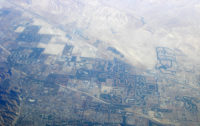One project that has received about $3 million in funding through the IRWM program is the $10-million San Francisco Public Utilities Commission (SFPUC) emergency repair and diversion project for the Lake Cherry aqueduct and associated infrastructure. The aqueduct was damaged in the 2013 wildfire, near San Francisco.
Using a series of dams and tunnels, the project will divert into the drinking-water system water that, typically, would support power transmission. The water will serve as a backup water supply if the drought continues, according to SFPUC. Flatiron Inc. is performing the rehabilitation work, the first phase of which is expected to wrap in October.
The governor this summer also signed legislation that requires local entities to establish groundwater management agencies to monitor and oversee withdrawals from groundwater basins. According to Juliet Christian-Smith, a climate scientist at the Union of Concerned Scientists, groundwater wells in California have been extremely overdrawn this year, causing the land around some of them to crumble, a phenomenon known as subsidence.
There may be turf battles among local entities for control of the management of groundwater basins, notes Ed Casey, a partner with law firm Alston & Bird who has seen firsthand how legal skirmishes play out over local water rights. "Court battles can go on for 10 to 20 years, and, during that time, projects don't get done." The Groundwater Management Act will not stop the battles over which entity has authority over specific groundwater basins, but the act will mitigate them more than the current unregulated and unmanaged system, he says. Ultimately, the law likely will encourage the sustainable development of ground-water supply infrastructure, Christian-Smith says.
SFPUC is already ahead of the curve, with a groundwater management plan in place, and it is working on two groundwater-well projects to provide more diversity to the agency's water-supply portfolio, says Paula Kehoe, agency director of water-resource planning.
The larger of the two—a $113.5-million regional project overseen by SFPUC, the California Water Service Co. and the cities of Daly City and San Bruno—will build 16 deep groundwater recovery wells and well stations to extract up to 7.2 mgd during dry years. During normal or rainy years, pumping will ease, and additional water will flow into a currently vacant, 60,000-acre-ft storage basin. Kehoe estimates that the extra groundwater supplies could stretch the system's Hetch Hetchy supply over a 7.5-year drought.
One Water
Agencies say they are going after groundwater because of limited surface-water supplies. A number of engineering and construction firms that work in the water sector talk about the idea of "one water," where water—whether it be source water, brackish groundwater, wastewater or stormwater runoff—is valued as a precious resource. "Water planners, city managers, regions … are starting to recognize that every drop of water that a community interacts with has a value and will contribute to the sustainability of the community, if we plan appropriately for it," says Art Umble, Americas wastewater practice leader at MWH Global.
As drinking-water supplies become increasingly scarce, utilities, ultimately, will have to look at various forms of recycling wastewater. The recycling might take the form of treating wastewater and reusing it for irrigation or extensively treating it before release into an aquifer or reservoir that, then, re-enters the drinking-water system.
One of the first examples of this type of recycling, called indirect potable reuse (IPR), was the Orange County groundwater replenishment project, which went on line in 2008. In Texas, two of the world's first direct-potable-reuse projects have come on line in the past two years. With direct potable reuse (DPR), wastewater is treated and goes directly into the drinking- water distribution system, without the IPR system's environmental buffer of an aquifer or reservoir. The Texas water districts that built the projects opted for DPR out of necessity, says the Texas Water Board's Mace.







